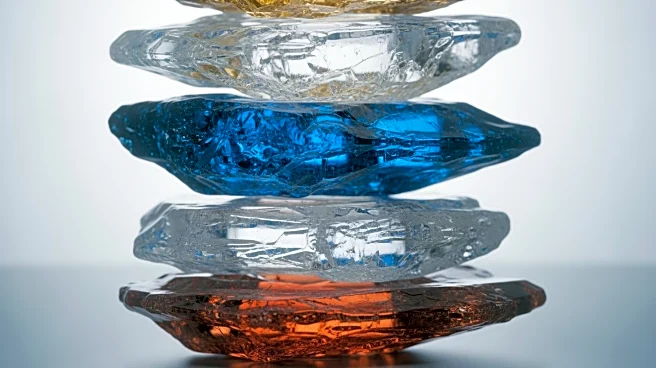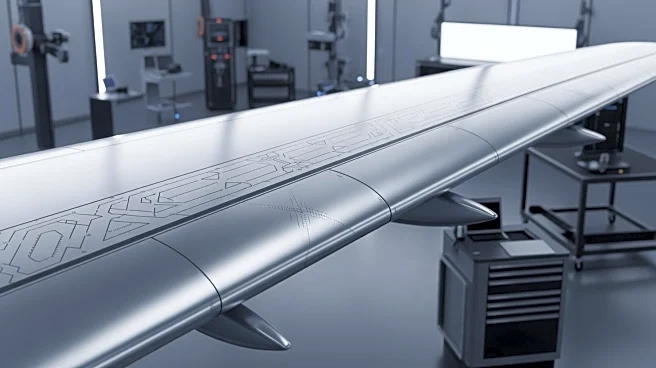What's Happening?
Recent research has demonstrated the potential of van der Waals (vdW) heterostructures in manipulating quantum material properties through enhanced light-matter interactions. These heterostructures, constructed
by stacking two-dimensional materials, exhibit phenomena such as superconductivity, polaritons, and quantum Hall effects. The study highlights the ability of these materials to form plasmonic self-cavities, confining terahertz light in standing waves due to finite size effects. This interaction can be tuned using electrostatic gates, affecting the material's carrier density and electronic structure. The research suggests that discrete modes of light confined in plasmonic graphite gates can modify the electrodynamics of vdW heterostructures, offering a pathway to new functionalities in quantum materials.
Why It's Important?
The findings are significant as they open avenues for engineering quantum materials with tailored properties, potentially leading to advancements in electronics and photonics. By leveraging the enhanced light-matter interaction, researchers can develop materials with unique macroscopic properties, such as modified ferromagnetism and altered quantum states. This could lead to breakthroughs in technologies like Bose-Einstein condensation and single-photon detection. The ability to control quantum phases through cavity dynamics presents opportunities for innovation in material science and quantum computing, impacting industries reliant on advanced material properties.
What's Next?
Future research will focus on capturing the intrinsic cavity-coupled electrodynamics of vdW heterostructures, requiring advanced spectroscopic techniques to measure terahertz conductivity. The development of on-chip terahertz spectroscopy will enable detailed analysis of these materials, overcoming challenges posed by their subwavelength size. Researchers aim to refine cavity control protocols, enhancing the interaction between light and matter to achieve desired quantum states. This could lead to practical applications in quantum computing and advanced sensing technologies, driving further exploration in the field.
Beyond the Headlines
The study underscores the potential for vdW heterostructures to revolutionize quantum material engineering by providing a platform for exploring light-matter interactions at the quantum level. The ability to manipulate quantum phases through cavity dynamics could lead to ethical and legal considerations regarding the deployment of such technologies, particularly in areas like data security and privacy. As these materials become integral to technological advancements, discussions around their impact on society and the environment will become increasingly relevant.











